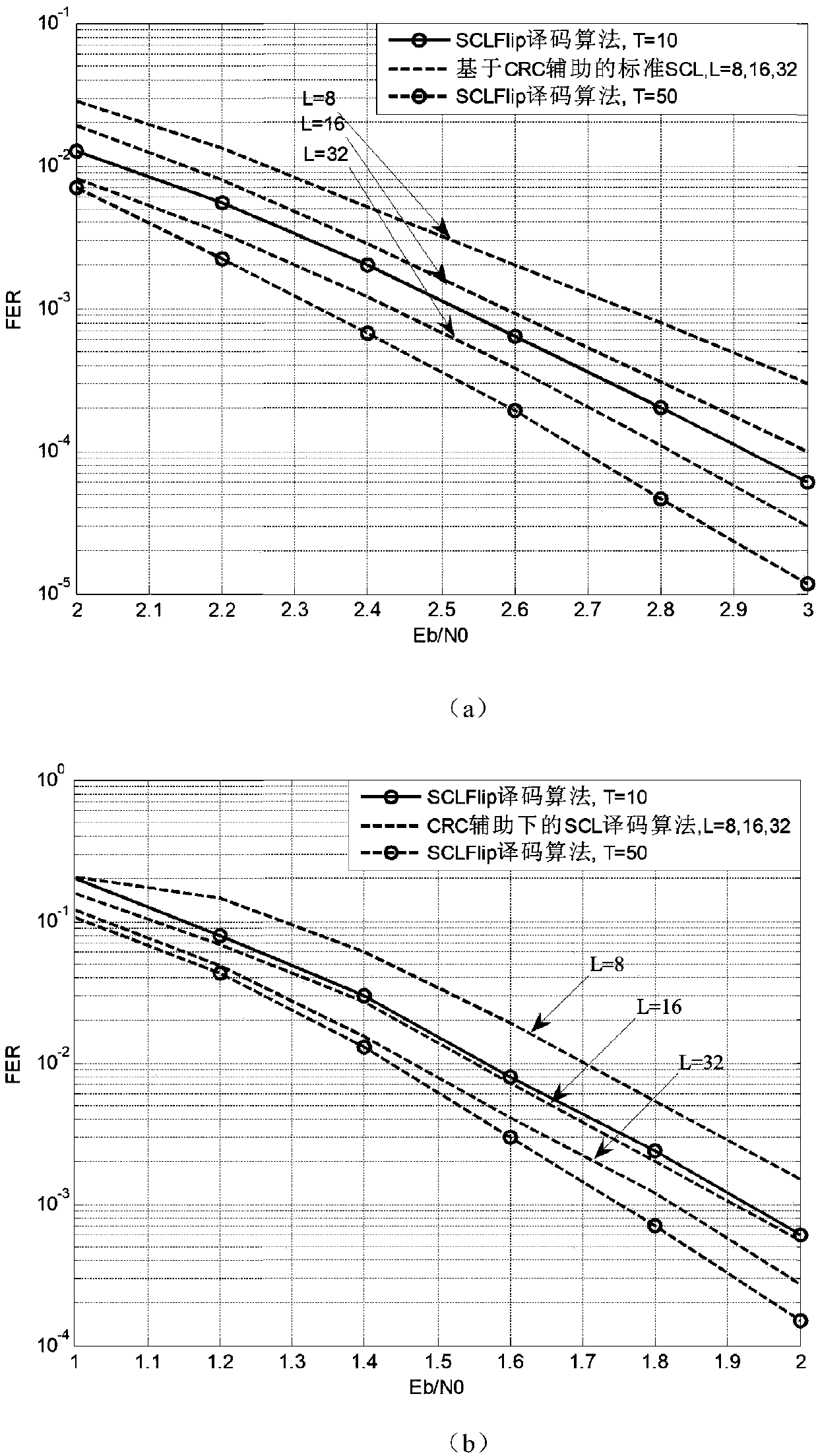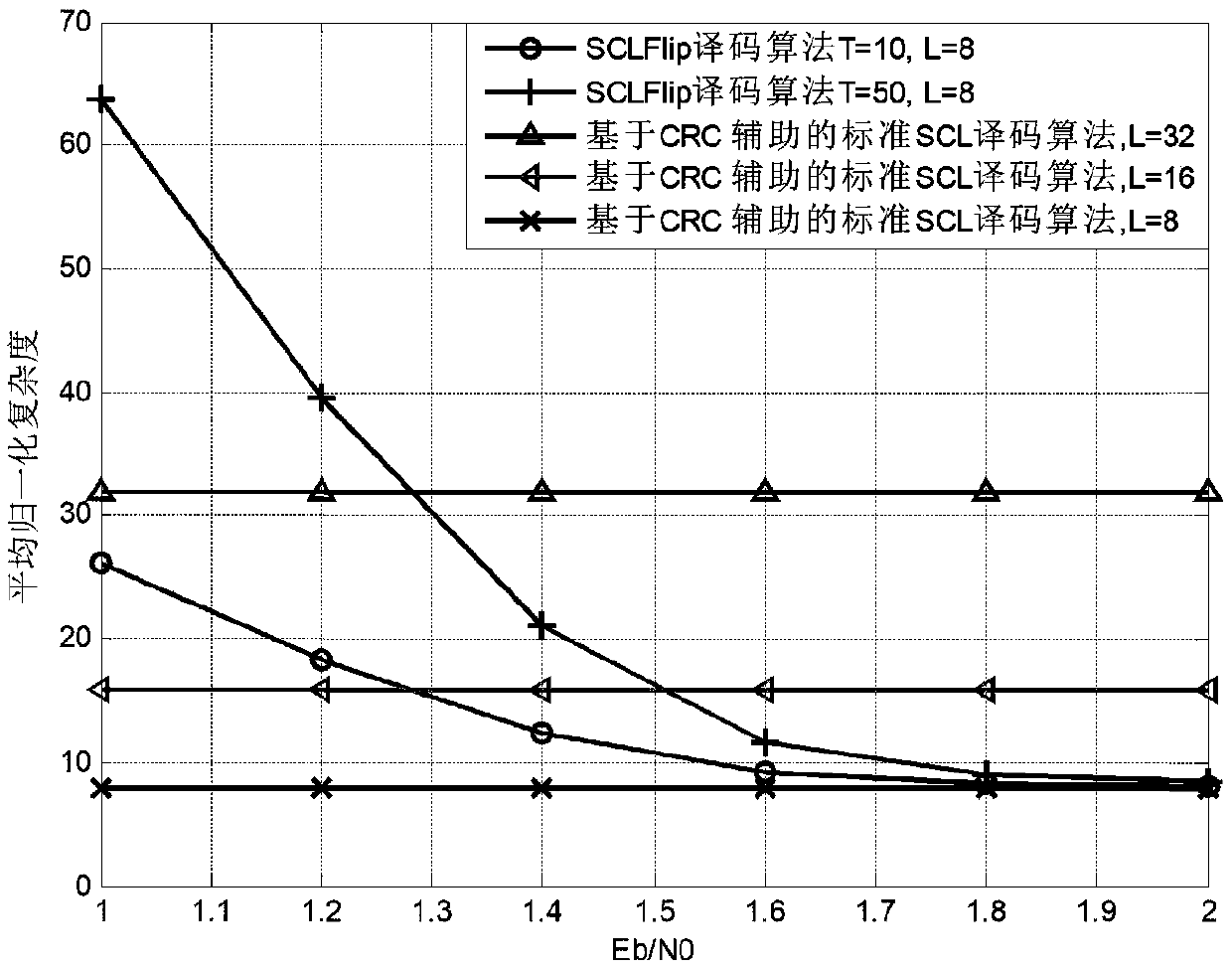High-performance polar code decoding algorithm
A decoding algorithm and polar code technology, applied in the field of wireless communication, can solve the problem that the decoding performance cannot be directly used, and achieve the effect of improving the decoding complexity, improving the decoding performance, and increasing the complexity.
- Summary
- Abstract
- Description
- Claims
- Application Information
AI Technical Summary
Problems solved by technology
Method used
Image
Examples
Embodiment Construction
[0019] The present invention will be further described in detail below.
[0020] The invention is a high-performance polar code decoding method. Firstly, CRC encoding, polar encoding and modulation are performed on the information sequence to obtain the transmitted signal. The receiving end adopts a serial cancellation decoding algorithm (bit-flip basedSCL, SCLFlip) based on bit flipping. The method consists of two parts. First, the standard SCL decoding algorithm is used for decoding, and the decoding result is detected by CRC. If there is a decoding path that can pass the CRC detection, the most reliable decoding path that can pass the CRC detection is used as the Decoding result. If no decoding path passes the CRC detection, the bit flipping mechanism is started immediately: that is, the position where the correct path falls out of the candidate path is found, and the decoding bits currently obtained by standard SCL decoding of all paths at this position are flipped, so t...
PUM
 Login to View More
Login to View More Abstract
Description
Claims
Application Information
 Login to View More
Login to View More - R&D
- Intellectual Property
- Life Sciences
- Materials
- Tech Scout
- Unparalleled Data Quality
- Higher Quality Content
- 60% Fewer Hallucinations
Browse by: Latest US Patents, China's latest patents, Technical Efficacy Thesaurus, Application Domain, Technology Topic, Popular Technical Reports.
© 2025 PatSnap. All rights reserved.Legal|Privacy policy|Modern Slavery Act Transparency Statement|Sitemap|About US| Contact US: help@patsnap.com



